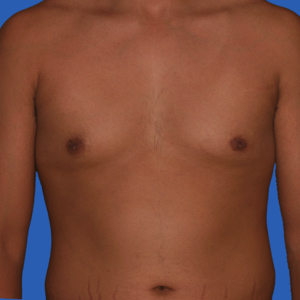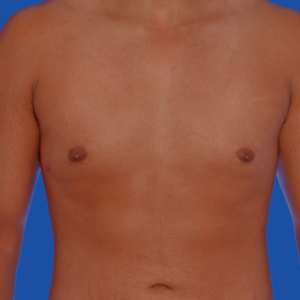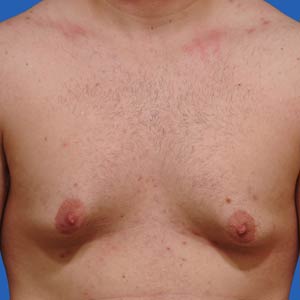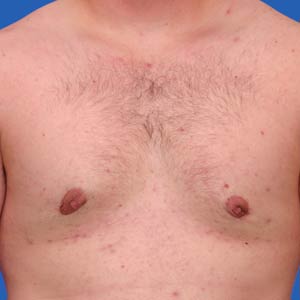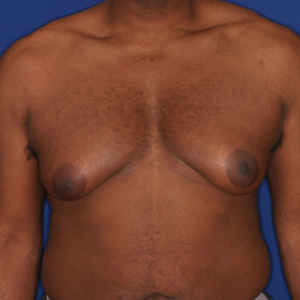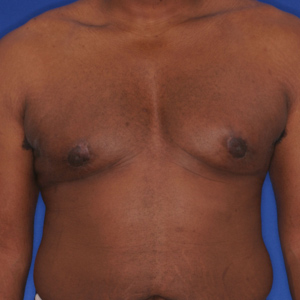Joseph T Cruise, MD’s philosophy
Joseph T Cruise, MD’s philosophy
Joseph T Cruise, MD’s Gynecomastia / Male Breast Reduction Philosophy

Enlarged male breasts is called gynecomastia. It can seriously affect the psyche of a man. In our society, it is OK for a man to have a few extra pounds around his stomach but not on the chest. I am not sure why this is but I suspect it is because of the feminizing quality that breast fat brings out. Many of my patients describe not being able to take of their shirt in public and, sometimes, even with their sexual partner. This brings up many self esteem issues.
- Overview of Gynecomastia
- Causes of Gynecomastia
- Ideal male chest
- Joseph T Cruise, MD’s Gynecomastia Philosophy
- 7 Types of Gynecomastia
- 1-Puffy nipple. Breast tissue outside of areola
- 2-Chest angle less than 45 °
- 3-Chest angle 45-60° Mild breast sag
- 4-Chest angle 60-90° Moderate breast sag
- 5-Chest angle greater than 90° Significant sag
- 6-Top of areola is above chest fold. Severe sag
- 7-Top of areola is below chest fold. Extreme sag
- Are You a Good Candidate?
- Benefits of Male Breast Reduction
- Components of Gynecomastia
- Classic Gynecomastia
- Puffy Nipples
- Fatty Gyecomastia
- Saggy Gynecomastia
- Breast Roll
- Prior to Male Breast Reduction
- Male Breast Reduction Anesthesia
- After the Male Breast Reduction
- Recovery from Male Breast Reduction
- Possible Complications
- Gynecomastia Cost and Financing
- Gynecomastia Words to Know
- Gynecomastia Before and After Pictures
Within the media, treatment of gynecomastia does not get the attention that other plastic surgery procedures do. This is because of the embarrassment associated with the condition and the insinuation of breast tissue. This is unfortunate because gynecomastia is very treatable. As a plastic surgeon, gynecomastia treatment is exceptionally satisfying because the results are predictably good. Sure, there are some men with poor quality skin who do not respond as well. But, for the vast majority, the results are very good.
It is not just the results that satisfy me but also the enhanced self esteem that I see within my gynecomastia patients. I believe this is why gynecomastia surgery has become a big part of my practice.
As pointed out earlier, gynecomastia is composed of three possible problems. I will go over these problems and highlight the techniques I have found most effective to treat them.
|
1) Excess Fat Almost every one of my gynecomastia patients has excess fat. This excess fat is often present even in patients who are not overweight. This fat is predictably treated with liposuction. The key is to use a very aggressive cannula because the fat underneath the nipple is usually very fibrous and hard to remove. |
Example of Excess Fat
|
2) Excess Fat and Breast Tissue
| Many of my patients are surprised to learn that men have glandular breast tissue just like women. In most of my gynecomastia patients, this breast tissue enlarges and becomes a problem. It is almost always located directly below the nipple and feels firm and squishy. | |
| Example of Excess Fat and Breast Tissue |
| This breast tissue usually does not respond to liposuction alone. It usually requires a small incision under the nipple to remove it. Fortunately, this incision is well hidden. |
 Gynecomastia incision. Incision is well hidden because it is placed right on the margin of the lower portion of areola. |
3) Excess Fat, Breast Tissue and Skin
| Uncommonly, gynecomastia may involve excess skin that needs to be removed. The reason why this is uncommon is because chest skin has a great capacity to contract back to the chest when the breast tissue is removed. Only patients with significant sag or poor skin quality need to have skin removed. |
If I have to remove skin, I typically remove it around the areola so that the incision is hidden between the interface of the dark areola skin and the chest skin. Normally, I do not remove skin at the same time as the breast tissue removal. The reason for this is because it is impossible to know how much skin, if any, needs to be removed.
Remember, even poor quality skin will contract somewhat. Therefore, it is best to allow this contraction to occur and remove only what is necessary. This way, the incision is much smaller. In addition, the skin removal is easily done under a local anesthesia.


